Personalized Vitiligo Treatment and White Spot Solutions
The skin gets its color from a substance called Melanin. Vitiligo is a condition that develops when the melanin producing cells die or no longer produce melanin. This causes white patches or pigment-free patches of random shapes and patterns to appear on the skin’s surface. While vitiligo can affect anyone, it is more noticeable in people with darker skin. Vitiligo usually starts as small areas of pigment loss. These areas of white patches slowly grow and spread over time.
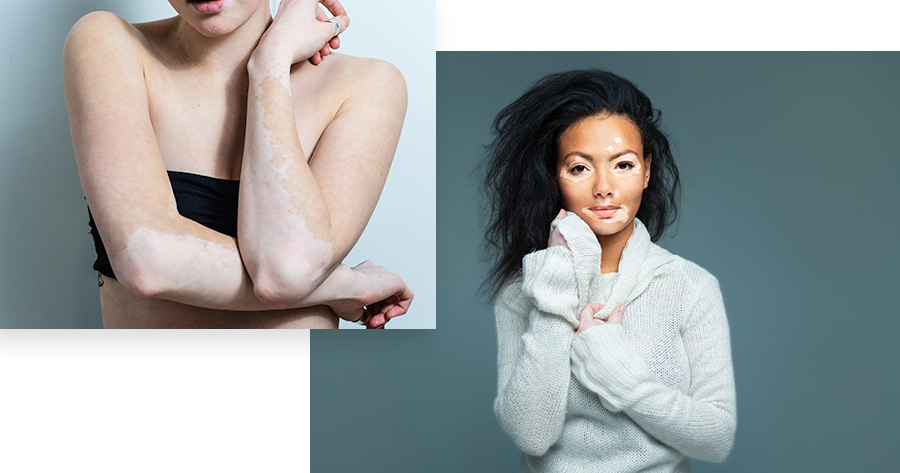
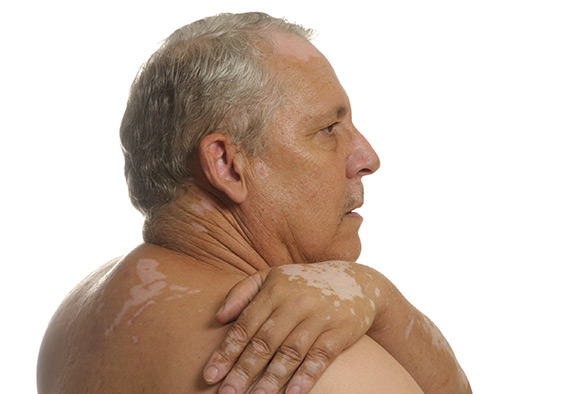
What Causes Vitiligo?
There are many theories on what causes vitiligo. The generally accepted theory is that vitiligo is a type of autoimmune disorder. An autoimmune disorder is when the body “attacks itself.” For vitiligo, it is believed that the body’s immune system sees the pigment cells in the skin as foreign or as something that endangers the body and therefore attacks them in an attempt to destroy the pigmented cells. This is thought to be a genetic condition. Currently, there is no cure available for those with vitiligo. Treatment is intended to slow the progression of pigment loss and, if desired, to restore pigment (tattoo).
Aside from being cosmetically debilitating, vitiligo can have serious affects on a person’s emotional and psychological health. People with this disorder can experience emotional stress, particularly if vitiligo develops on visible areas of the body, such as the face, hands, arms, and feet.
While Vitiligo is difficult to treat, several therapies have been developed to help people with this condition. These therapies include but are not limited to topical drugs, immunosuppressants, phototherapy, lasers, and several surgical processes.
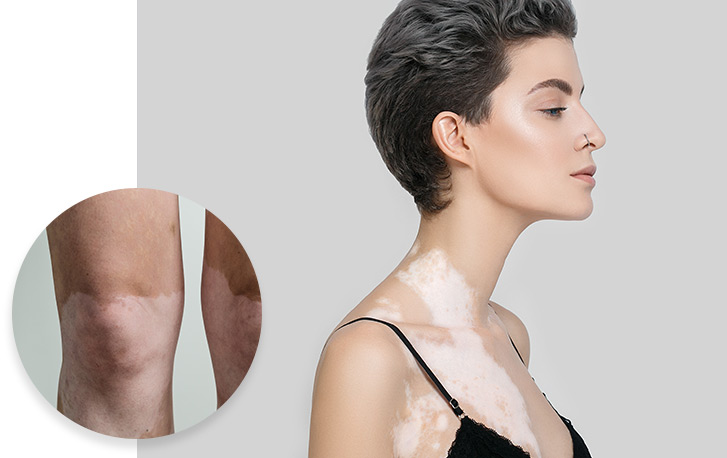
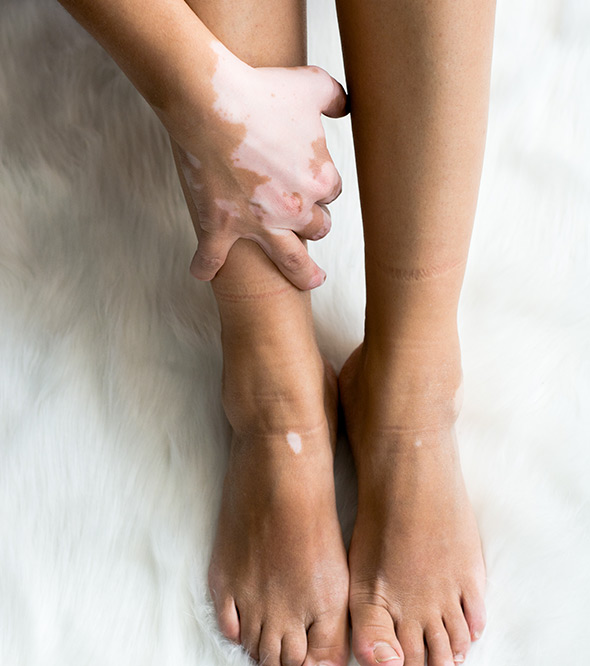
Symptoms of Vitiligo
The main symptom of vitiligo is the disappearance of skin pigment and appearance of white patches throughout the body. Less common symptoms may include graying of the hair (scalp, eyelashes, eyebrows) and loss or change of color of the retina (inner layer of the eye).
Vitiligo generally presents on areas of the body that are exposed to the sun such as the face, hands and arms. However, the condition can and often does extend to areas of the body that generally do not receive any sun exposure such as the genitals.
Types of Vitiligo
There are three types of vitiligo that may develop. The first is Generalized. This form of vitiligo is the most most common type of vitiligo in which pigment loss is widespread throughout the body, often presenting in symmetrical patterns. Segmental is the second form of vitiligo. In segmental vitiligo, loss of skin color only occurs on one side of your body. This form of the condition tends to occur at a younger age and progresses for a year or two and then stops. The final type of vitiligo is Focal. In this form of vitiligo, pigment is lost from a few isolated areas of the body.
Topical Steroid Therapy
Corticosteroids (steroid creams) work to restore pigment in the skin. This form of treatment is the safest therapy for vitiligo but not necessarily the most effective. The best results occur when the cream is applied in the early stages of the disease. When using a corticosteroid topical ointment, one will have to apply the cream to the white patches on the skin for at least 3 months before recognizing results. Side effects from the use of such steroids may result in skin atrophy or shrinking, and the appearance of steaks and lines (striations) in the skin.
Our doctors will advise you on where and how to apply the cream to minimize these side effects. Call our office today to make an appointment with one of our board certified specialists to help treat your condition.
Topical ointments containing tacrolimus or pimecrolimus are effective for people with small areas of depigmentation, especially on the face and neck. These drugs are immunosuppressants. This treatment may have fewer side effects than corticosteroids and can be used in combination with ultraviolet B (UVB) treatments as we will discuss below.
Our dermatologists and plastic surgeons will develop a customized treatment plan based on your specific concerns and medical history. Please call to schedule a consultation with one of our cosmetic surgeons to seek appropriate treatment for your aging skin.
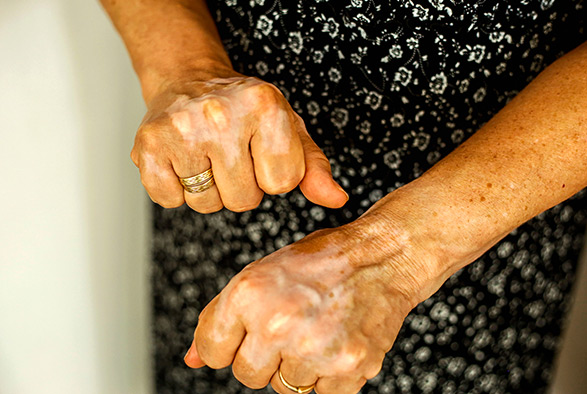
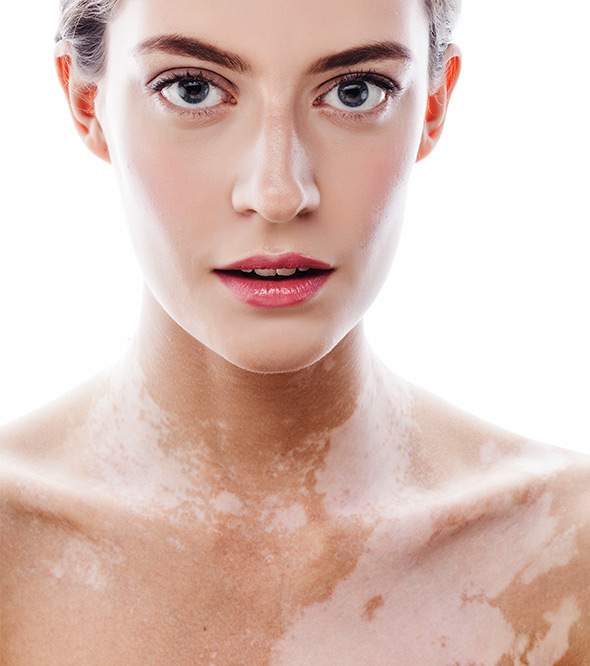
Topical Psoralen Plus Ultraviolet A or PUVA
Commonly referred to as photochemotherapy is used to repigment the skin. If our doctors determine that this form of therapy is best for you, we will first treat your skin’s affected areas with a thin coating of psoralen before you are exposed to the actual UVA lighting. Psoralen has the ability to absorb the light, making for a more effective treatment session. After being exposed to the UVA light, the skin will turn pink. As it heals, a more normal skin tone is supposed to develop. A variation treatment that is sometimes used is a water bath PUVA. For this treatment, the patient lies in a tub of water containing psoralen for 15 minutes before being given the light treatment. Possible side effects of PUVA include sunburn and blistering. This could be avoided by using a high grade sunblock and avoiding direct sunlight post treatment. Some patients experience hyperpigmentation or overdarkening of the skin. In most cases, this side effect is temporary and usually lightens once treatment stops.
Oral Psoralen Photochemotherapy or Oral PUVA)
This form of treatment is used for patients that have symptoms over 20% of their body. A patient will take a dose of psoralen orally as determined by our physician approximately two hours before the actual UVA light exposure. The doctor may ask you to return several times in one week for continuous treatment. As with topical psoralen discussed above, oral psoralen followed by UVA will turn the skin pink, eventually changing to a more normal skin tone. This form of treatment may have several short term side affects such as the aforementioned sunburn and blistering, nausea, vomiting, itching, abnormal hair growth and overdarkening of the skin.
Narrowband Ultraviolet B (UVB) Therapy
Narrowband UVB, is a form of light that uses a more specific wavelength of light than PUVA. Narrowband UVB does not require psoralen to be applied before treatments.
Excimer Laser
The Excimer laser system works by focusing a direct and specific beam of light on the affected area. The Excimer system is designed to repigment the skin, with a low risk of damaging healthy skin. During a treatment, our doctors will move the Excimer hand-piece over the affected area, applying laser light at doses pre-determined by your skin tone.
Even with this wonderful technology, there is no fool-proof cure of vitiligo. Results from the Excimer laser have been found to last for extended periods of time, rivaling conventional phototherapy.
Depigmentation
Depigmentation is another treatment option for vitiligo patients. This form of therapy doesn’t work on the affected areas, but rather works non-affected areas to lighten them so that there is continuity in color throughout the person’s skin. Come in and speak to one of our doctors for more information on this treatment option and to discuss its possible side effects.
Tattooing (Micropigmentation)
Tattooing artificially pigments the skin and for vitiligo sufferers, tattooing has been the most effective treatment for sensitive areas around the lips and in people with dark skin.


Future With Vitiligo
Doctors and researchers are continuously pursuing new treatments and even cures for vitiligo. One newer option is a procedure called an autologous melanocyte transplant. This therapy promises to grow a sample of the patient’s actual skin in the lab and then transfer the melanocytes from the lab grown skin to the body regions that have lost pigment. Reviewing before and after vitiligo treatment results can provide valuable insights into the effectiveness of this experimental treatment, which is not widely available.
